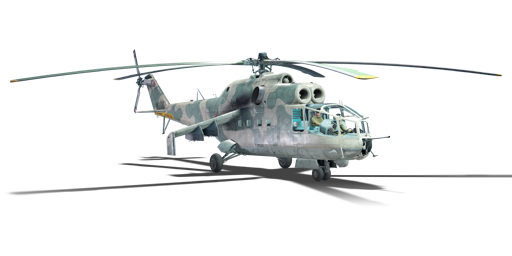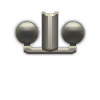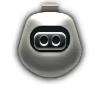



The Mi-24A (NATO Code: Hind-A) was a Soviet multi-purpose attack helicopter designed with the intent of being a versatile combat platform that could serve both as an attack helicopter and a troop transport. It was developed in the late 1960s and entered service in 1972. The Hind quickly gained popularity due to its unique design and impressive capabilities. It could quickly perform medevac missions as well as troop insertion and extraction operations. In addition to that, its assault capabilities were just as impressive, with its powerful armament including a 12.7mm nose-mounted machine gun, rockets, and anti-tank guided missiles. The Hind's ability to operate in various terrains and climates made it a valuable asset for the Soviet military, ensuring its widespread deployment and success in numerous conflicts. Due to its versatility, it is still in use by several nations, including Russia, albeit in more advanced variants.
The Mi-24A was introduced in Update 1.81 "The Valkyries". As the second helicopter in the tech tree, it is a sufficient upgrade to its predecessor, the Mi-4AV. Despite having roughly the same loadout options, it offers much better playstyle options due to its performance, with a top speed difference of over 100 km/h and an increase in engine power of 400 hp. Instead of hovering in one place, you may now engage in hit-and-run tactics, making use of ATGMs, rockets, and the 12.7 mm A-12.7 machine gun. However, it is important to keep a lookout for enemy SPAA, as they pose a significant threat to the relatively lightly armoured helicopter.
| Belt | Belt filling | Armor penetration (mm) at a distance: | |||||
|---|---|---|---|---|---|---|---|
| 10 m | 100 m | 500 m | 1000 m | 1500 m | 2000 m | ||
| AP-I/API-T/AP-I | 29 | 27 | 20 | 13 | 9 | 6 | |
| AP-I/AP-I/IAI/API-T | 29 | 27 | 20 | 13 | 9 | 6 | |
| IAI/AP/API-T/AP | 31 | 30 | 22 | 16 | 11 | 8 | |
| IAI/API-T/IAI/IAI | 29 | 27 | 20 | 13 | 9 | 6 | |
| Name | Weight | Slot | ||||||
|---|---|---|---|---|---|---|---|---|
| 2 × | 63 kg |  |  | |||||
| 32 × | 225.5 kg |  |  |  |  | |||
| 250 kg |  |  |  |  | ||||
| 94.3 kg |  |  |  |  | ||||
| 478 kg |  |  | ||||||












Flight performance |
|---|
Survivability |
|---|
Weaponry | |
|---|---|